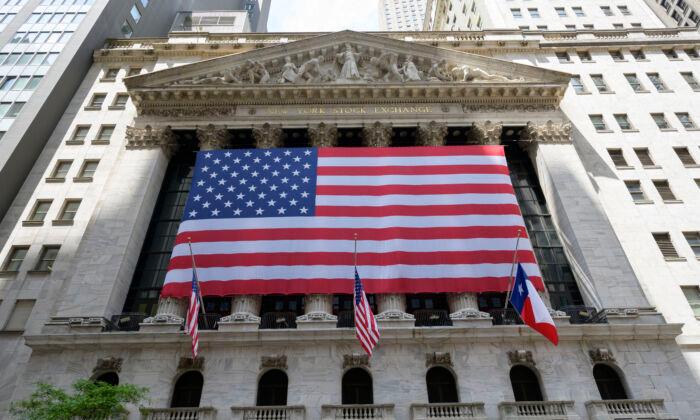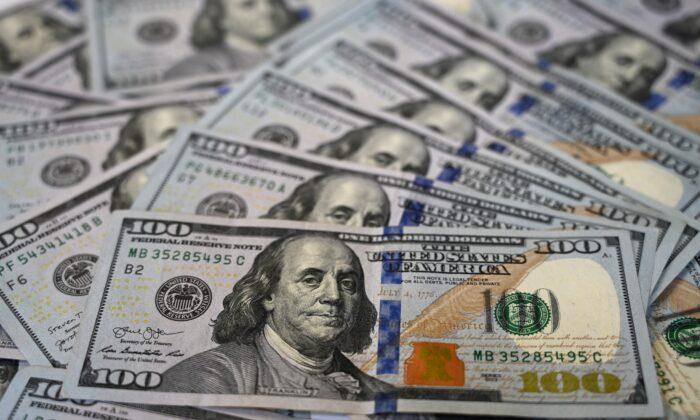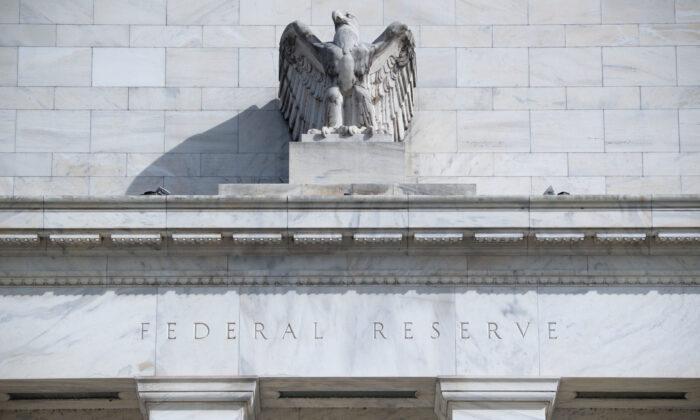In what may be the worst timing in its checkered history, the Federal Reserve has begun taking money out of the economy at the very time the economy is shrinking. The ill timing of the Fed’s latest move raises the main question investors would like answered—how long will Fed policy stay restrictive?
Speculating about the timing and magnitude of the Fed’s policy moves is clearly subjective, but so, it appears, is Fed policy. The timing of any shift away from restraint depends on the magnitude of the downturn and upcoming inflation numbers.
The magnitude of the downturn could be moderate, but the wrong Fed moves would make it severe. Government policies regulating energy production and efficiency and other regulatory barriers have already undermined America’s historical strength.
Since 1900, the U.S. economy has experienced five distinct periods of poor economic performance where living standards ceased growing or declined and Americans lost faith in the country’s future. Each of these periods saw rapid increases in federal spending, widespread government regulations over the behavior of individuals and businesses, and higher tax rates.
With the exception of higher tax rates, these are the policies of the past two and a half years. The current cycle represents the sixth occasion where economic policies have weakened the economy, making it extremely vulnerable to Fed tightening.
Inflation will remain a serious problem so long as the pace of spending is above a 4 percent to 5 percent threshold. Up till now, double-digit spending has supported double-digit inflation. Recent spending and income data show spending increases moderating to the 7 percent to 9 percent vicinity. Spending increases will have to slow still further to contain inflation.
Despite current hardships from declining productivity and soaring inflation, the government shows no signs of reversing policies. Although difficult to believe, Congress is considering raising taxes and further increasing government spending and regulations. By undermining productivity and corporate profits, these policies further increase the federal deficit and promote additional federal spending to finance the government’s massive debt. Such policies would promote higher inflation and higher interest rates.
As the economy weakens, the Fed is using its monetary tools to contain inflation. The Fed intends to keep raising interest rates and selling securities in an effort to reduce the money supply. Reducing the money supply will slow the pace of spending and eventually slow inflation.
This is the same Fed that ignored calls for monetary restraint early in 2021. In February of that year, Rep. Warren Davidson (R-Ohio) expressed concern over a 25 percent increase in the money supply. Fed Chairman Jerome Powell responded, “there was a time when monetary policy aggregates were important determinants of inflation and that has not been the case for a long time.” Downplaying the importance of the money supply was a serious mistake.
Another Fed mistake was ignoring the lags between the implementation and the economic results of its policies.
Historically, it takes six to nine months for Fed policy to impact the pace of spending. The lag can be shorter if the policy change is large and longer if the policy change is modest. It can take even longer, two to three years, to contain inflation once it has become ingrained into the economy. The Fed is late to the game and is attempting dramatic changes to restrain the money supply.
Has the Fed turned restrictive?
One of several ways to measure monetary restraint is to measure the raw ingredients of money entering the economy. By this measure, policy remained expansive through the month of June despite the Fed’s intended restraint.
Another measure of monetary restraint is the spread between short and longer-term interest rates. Here, money remains expansive but has moderated. The moderation indicates financial markets expect the Fed will be successful in eventually reducing inflation.
Yet another measure of monetary restraint is the increase in short-term interest rates. This is the Fed’s favorite measure. Since March, the Fed’s target rate has increased from essentially zero to an expected 2¼ percent to 2¾ percent at the end of July. Although the increase has been dramatic, interest rates remain extremely low relative to increases in spending and inflation.
There is uncertainty over the extent to which current interest rates are sufficient to slow spending and contain inflation. This uncertainty is reflected in financial markets, which now anticipate the Fed’s target rate will reach 4 percent to 4½ percent by the year’s end.
If the Fed makes the same mistakes in applying restraint as it made in creating the current inflation, it will continue to drain money from the economy at least through the end of 2022. With normal lags between monetary restraint and the economy, the current recession will extend through at least the first half of 2023.
If the economy were to continue to decline with rising unemployment going into 2023, the Fed would be forced to consider shifting back to a more neutral or less restrictive policy. The likely shift to such a policy is at least six months to a year away.
Whenever the shift to an expansive monetary policy comes, it will ease financial conditions. However, it cannot solve the economy’s more fundamental problems. Resolving underlying problems will take the same solution that restored economic prosperity throughout America’s history—policies will have to shift away from an overreaching government and back to traditional free-market classical principles.
The good news is, after each cycle where America’s economy suffered a major setback, voters and policymakers eventually opted to change course. Federal spending and regulations were constrained, government reduced its interference in markets, and tax rates were cut. In each case, returning to America’s traditional formula for success quickly restored prosperity.





